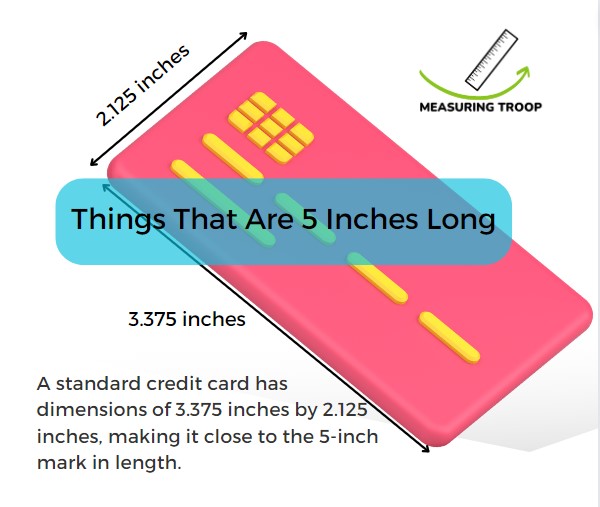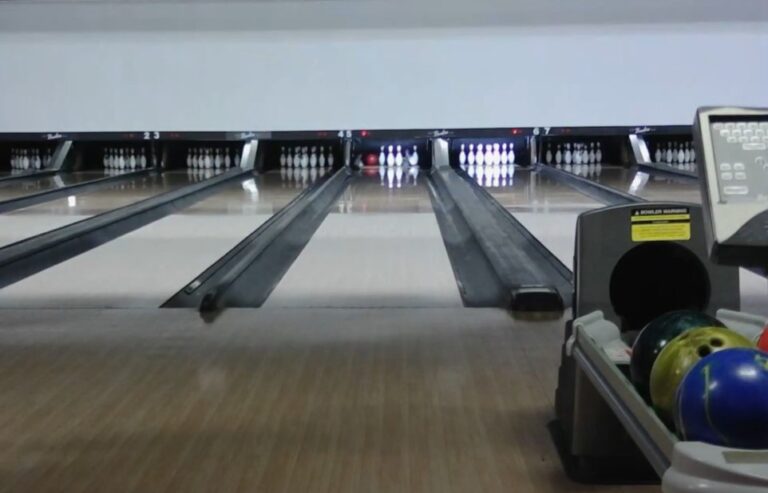11 Common Things That Are 5 Inches Long

Common things that are 5 inches long are pencils, smartphones, bananas, credit cards, pocket knives, Standard CD cases, Remote controls, batteries, lipsticks, screwdrivers, and thumb drives. These items are commonly used and found in everyday life, making them relatable and easily identifiable.
The concept of length is an integral part of our daily lives, and we often encounter various objects and measurements that adhere to specific dimensions.
In this exploration, we discuss the realm of 5 inches—a measurement that might seem ordinary but holds significance in various aspects of our surroundings.
From everyday items to tools, understanding the length of 5 inches can provide intriguing insights into the world around us.
How Long is 5 Inches?
Before we embark on exploring common things that measure 5 inches, let’s establish a clear understanding of the length itself.
5 inches is equivalent to 12.7 centimeters.
To visualize this, imagine the length of a standard credit card or the diameter of an average smartphone screen.
Now that we have a mental image, let’s delve into how you can easily measure 5 inches at home.
How to Measure 5 Inches Easily at Home?
Measuring 5 inches at home doesn’t necessarily require specialized tools; everyday items can serve the purpose just as well.
One simple method involves using your hand.
For most adults, the span from the tip of the thumb to the tip of the pinky finger when fully extended is approximately 8 inches.
By halving this span, you get an estimate of 4 inches. Adding a little extra, you can gauge 5 inches quite accurately.
Alternatively, a standard piece of paper is close to 11 inches in length. Folding it in half and then half again will give you a segment that is roughly 5 inches.
These quick and easy methods can come in handy when you need a rough estimate without the need for a ruler or tape measure.
5 Inches in Different Units of Measurement:
While we commonly use inches, it’s interesting to explore the equivalent lengths in other units of measurement.
5 inches equates to 12.7 centimeters in the metric system.
In the imperial system, it is approximately 0.4167 feet.
Here’s a table showing the equivalent of 5 inches in various units of measurement:
| Unit of Measurement | Equivalent to 5 Inches |
|---|---|
| Inches | 5 inches |
| Feet | 0.4167 feet |
| Yards | 0.1389 yards |
| Centimeters | 12.7 cm |
| Meters | 0.127 meters |
| Millimeters | 127 mm |
Length Converter
Converted Lengths:
Inches:
Feet:
Yards:
Centimeters:
Meters:
Millimeters:
11 Common Things That Are 5 Inches Long:
To give a visual reference for the size of 5 inches, here are a few common objects that are approximately 5 inches long:
Smartphone Screen
The average smartphone screen measures around 5 inches diagonally.
This dimension has become a standard for many mobile devices, offering a balance between portability and display size.

Credit Card
A standard credit card has dimensions of 3.375 inches by 2.125 inches, making it close to the 5-inch mark in length. This compact size allows for easy storage in wallets and cardholders.

DVD Disc:
The diameter of a standard DVD is approximately 4.7 inches. While not precisely 5 inches, it is close enough to give you an idea of the size of optical discs.

Handspan:
The span from the tip of the thumb to the tip of the pinky finger when fully extended for most adults is around 8 inches.

Halving this span gives an estimate of 4 inches, making it a convenient way to gauge 5 inches.
Pocket Knife:
Many pocket knives have blades that are around 5 inches in length.
This size strikes a balance between versatility and compactness, making them popular for various everyday tasks.

Tablet:
Some smaller tablets, especially those designed for portability, feature screens that are close to 5 inches.

These devices cater to users who seek a more substantial display than a smartphone without the bulk of a larger tablet.
Large Paperclip:
A large paperclip, commonly used for securing multiple sheets of paper, typically measures around 5 inches when fully extended.

This office essentially exemplifies simplicity in design and functionality.
Standard Pencil:
The standard wooden pencil, often used in schools and offices, is around 7.5 inches in length.

However, when considering the usable writing portion, it is close to 5 inches.
Car Key:
Many car keys, especially those with remote control features, have a length of approximately 5 inches.

The design is crafted for ease of handling and storage.
Remote Control:
The remote controls for various electronic devices, such as TVs and DVD players, often have a length of close to 5 inches.

This size facilitates comfortable handling and convenient placement on tables or in hand.
Dollar Bill:
While a standard U.S. dollar bill is about 6.14 inches long, half of its length is approximately 5 inches.

This common currency denomination provides a tangible reference for the measurement of everyday transactions.
FAQs:
Can I use a ruler to measure 5 inches?
Yes, a standard ruler is an accurate tool for measuring 5 inches. Simply align the object or distance you want to measure with the ruler, starting from the zero mark.
Are there other common objects that are 5 inches long?
Certainly, the list provided earlier is not exhaustive. Many tools, utensils, and gadgets are crafted with dimensions close to 5 inches, offering practicality and convenience.
Is 5 inches a standard measurement for certain items?
Yes, particularly in the realm of electronics, a 5-inch screen size has become a standard for smartphones and certain tablets due to its optimal balance between portability and usability.
Can I use the handspan method for accurate measurements?
While the handspan method provides a quick estimate, it may not be as accurate as using a ruler or tape measure for precise measurements. It is best suited for situations where a rough estimate is sufficient.
Why is 5 inches a common measurement for screens and displays?
The 5-inch screen size has gained popularity in electronics due to its optimal balance between providing a sufficiently large display for usability while maintaining a compact and portable form factor.
Conclusion:
In the tapestry of measurements that surround us, the 5-inch mark holds a unique place, manifesting in various common items we encounter daily.
From the screens of our smartphones to the blades of pocket knives, this modest length offers a blend of functionality and convenience.
Understanding the significance of 5 inches not only provides practical insights into our immediate environment but also underscores the thoughtfulness embedded in the design of everyday objects.
As we navigate through the myriad dimensions that define our surroundings, the ability to conceptualize and measure 5 inches becomes a valuable skill.
Whether using our hands, everyday objects, or dedicated tools, the familiarity with this length enriches our understanding of size and proportion.
As technology advances and design principles evolve, the prevalence of the 5-inch measurement persists, shaping the landscape of our tangible interactions with the world.






